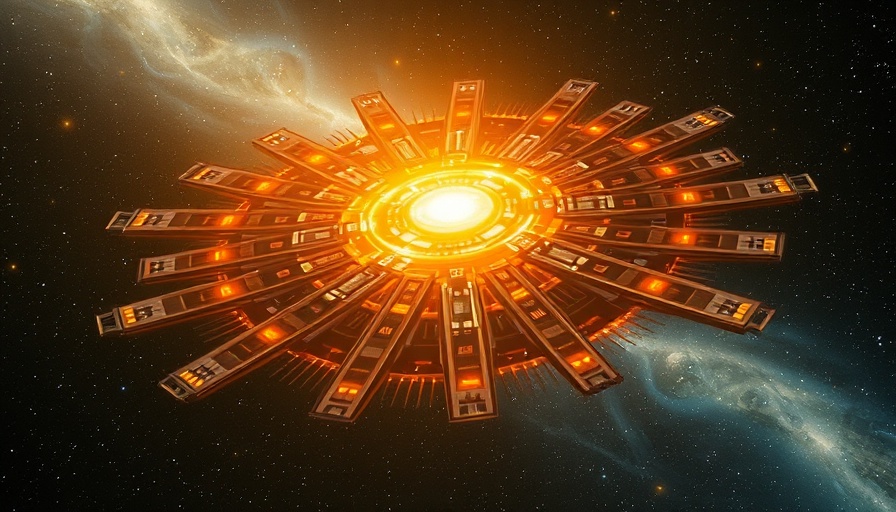
Understanding the Dyson Swarm Concept
As humanity steps into the future, our need for energy becomes increasingly paramount. Theoretical constructs like the Dyson swarm, first proposed by physicist Freeman Dyson in 1960, offer ambitious possibilities for harnessing power from stars beyond our solar system. Unlike the concept of a Dyson sphere, which envisions a solid shell around a star, a Dyson swarm consists of many smaller satellites orbiting a star, each designed to capture its energy output. This supramundane aspiration represents a significant leap in our energy capability, potentially allowing us to advance to a Type II civilization on the Kardashev scale—where a civilization can utilize all the energy of its host star.
The Dangers of Trapping Heat
A recent study led by Ian Marius Peters at the Helmholtz Institute revealed alarming implications of constructing a Dyson swarm. The research concludes that such a swarm, positioned outside Earth’s orbit, could raise the planet's temperature by a staggering 140 K. This drastic temperature increase raises questions about our planet's habitability. During the construction of these swarms, not only must we contend with energy demands but also the environmental consequences that could unfurl, leading to a climate hostile to existing life forms.
The Technical Challenges Involved
The creation of a Dyson swarm is enmeshed in complex engineering challenges. For instance, the efficiency of photovoltaic cells used to convert solar radiation into usable energy significantly relies on temperature. The challenge escalates as these cells must not only gather energy but also maintain cooler temperatures to function effectively. With such a vast surface area needed for the swarm, managing thermal regulation amidst constant exposure to stellar radiation and the cold void of space becomes a monumental task.
Environmental and Ethical Implications
The concept of harnessing stellar energy raises important ethical considerations. If we prioritize energy above all else, could we unintentionally doom our planet to become uninhabitable? As the urgency of climate change grows, discussions around such megastructures prompt a deeper inquiry into the balance between innovation and preservation. Moreover, do we have the right to alter celestial bodies to satisfy our energy demands? This reflection leads to critical questions about our responsibilities as stewards of Earth.
Future Perspectives on Energy Production
As technology progresses, society may have to confront the ethical dilemmas associated with energy production on a cosmic scale. Implementing a Dyson swarm might seem distant, yet the fundamental issues it raises resonate today. The struggles we harbor surrounding energy sustainability can inform our approach to futuristic ideas. By framing our efforts within the lens of sustainability, we can still dream of revolutionary inventions while cultivating a mindset focused on preserving our planet.
Conclusion: A Call for Thoughtful Innovation
The ambitious dream of a Dyson swarm presents a host of possibilities that are currently theoretical yet essential to consider in our quest for a sustainable future. As conversations around energy efficiencies and technological advancements continue, it remains crucial to ensure our ambitious plans do not compromise the very habitat we seek to enhance. Therefore, moving forward, we must seek innovative energy solutions while remaining vigilant stewards of our planet.
 Add Row
Add Row  Add
Add 




Write A Comment